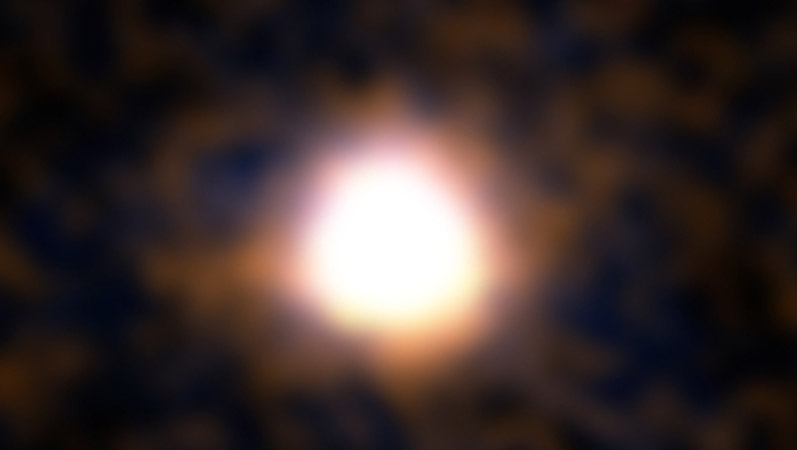Galaxies are supposed to build up a very slowly, taking billions of years to acquire their vast bulk. But a newfound galaxy, appearing in the universe when it was only 1.8 billion years old, tells a different tale. It formed stars at a rate hundreds of times greater than the Milky Way, and was able to build itself up to host 200 billion stars in less than 500 million years – perhaps the universe’s greatest speed run.
Galaxies build up slowly. They start from very small nuggets and over the course of hundreds of millions and even billions of years, they merge with each other, steadily growing as they do, until they reach their current size in the present-day universe.
This is called the hierarchical model, and it’s the dominant theory to explain the growth of galaxies over cosmic time.
But astronomers using the University of Arizona’s Large Binocular Telescope spotted an oddball ( there always has to be an oddball, right?). This galaxy, called C1-23152, is billions of light years away from us. Its light has been traveling for over 12 billion years, making it a relatively young galaxy on the cosmic scene, appearing when our universe was only 1.8 billion years old.

By measuring the age, metal content, and velocity of the stars in C1-23152, the astronomers in the study discovered something astounding. As far as they can tell, this galaxy grew up from basically nothing, and only took 500 million years to do it.
At the peak of its star formation, C1-23152 was cranking out hundreds of stars every year, averaging a few stars every single day. To give you some perspective, the Milky Way Galaxy currently produces only a handful of stars every year.
In less than half a billion years, C1-23152 was able to go from a cosmic nobody to a massive superstar galaxy.
But if C1-23152 didn’t grow up through the usual hierarchical ways, how did it get so big so quickly? The astronomers believe that C1-23152 is the result of a massive cosmic accident, where two giant gas clouds in the early universe collided, triggering a round of rapid star formation that was able to persist for hundreds of millions of years, forming a galaxy in the process.
By studying more galaxies like C1-23152, astronomers can better understand all the complicated ways that galaxies build themselves in our universe.
